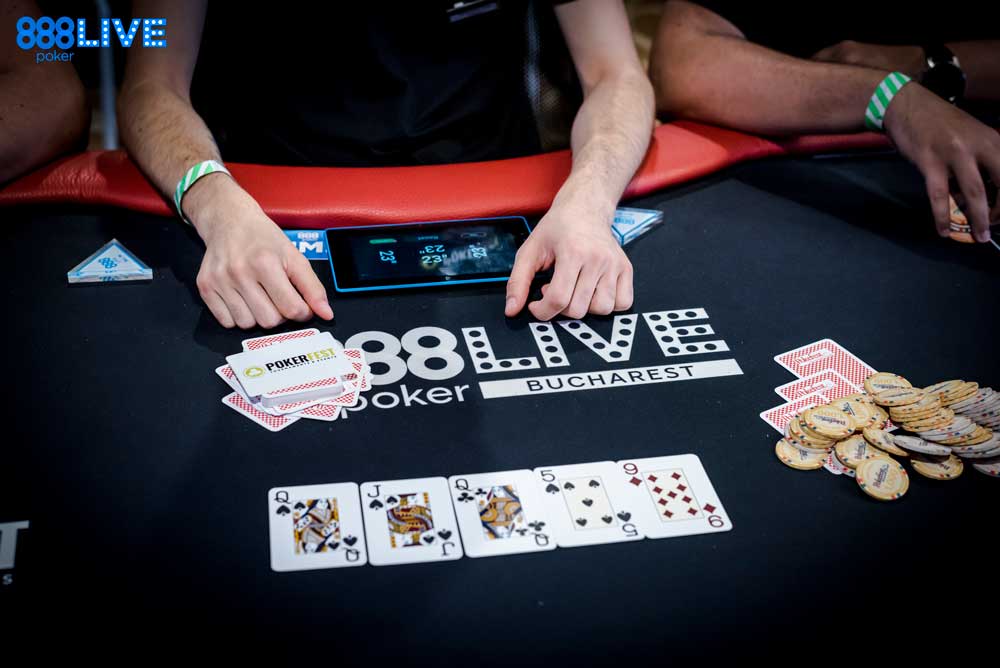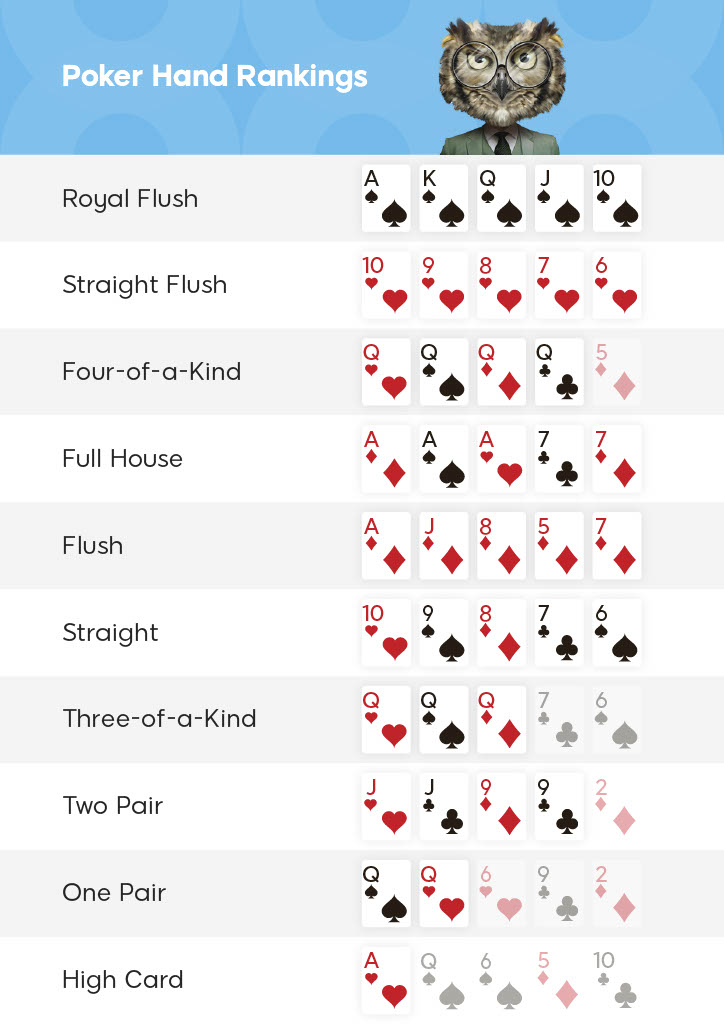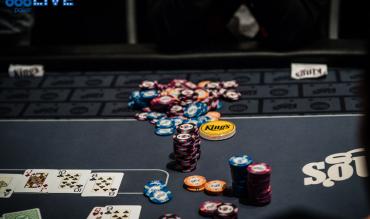If you’re looking to play an action-packed poker game, look no further than Courchevel Poker!
The game is rooted in Omaha, where a player receives four down cards. They must use two of which in conjunction with three community cards to make their best five-card hand.
But there are two major differences between Omaha and Courchevel Poker, a poker variant not a lot of people have played.
- Firstly, players receive five cards instead of the traditional four.
- Secondly, the first community card is exposed preflop before the first round of betting takes place.
They may seem like two minor differences, but they make a world of difference. These features establish Courchevel Poker as one of the most volatile and enjoyable poker games in existence.
History of Courchevel Poker
Like most poker variants, the exact origins of the game aren’t known. But rumour suggests it originated in either the late 1980s or early 1990s at its namesake French Alps ski resort.
Apparently, some tourists visiting the Courchevel Resort near the Italian border wanted to play poker. Albeit poker was something no one had ever played before. So, they invented their own game.
Courchevel Poker became fairly popular in the now-shuttered Aviation Club de Paris, which makes sense given the game originated in France.
In 2013, the game first appeared online. But it never really caught on with the masses. There has never been a Courchevel Poker event at the World Series of Poker (WSOP), nor any modern major poker stop.
How to Play Courchevel Poker
While the game can be both limit and no-limit, Courchevel Poker has historically been a pot-limit game. So, the maximum bet is limited to the size of the pot.
It also has blinds. The player to the left of the dealer button puts in the small blind, and the player to their left has the big blind.
Each player is dealt five cards face down. These are known as a player’s hole cards. Then, the first community card, known as “the door card,” is put in the middle of the table face up.
From there, the hand plays out in the same fashion as either Hold’em or Omaha. The player to the left of the big blind acts first and can call, raise or fold.
Rules of Courchevel Poker
 Rules of Courchevel Poker
Rules of Courchevel Poker
In Courchevel Poker, the first round of betting takes place after the following preflop action. All players will have received their five hole cards, and the first community card revealed face up.
- Once complete, two more community cards are placed face up to complete “the flop.”
Another round of betting takes place, starting with the player closest to the left of the button.
- Like in Hold’em and Omaha, the fourth community card is called “the turn”, and the fifth is “the river.”
A round of betting follows each leading up to the “showdown” for all remaining players.
As in Omaha, Courchevel Poker requires players to make their best five-card hand. They must use two cards from their hand and three from the community cards.
Again, you have to use exactly two from your hand and three from the board to make a five-card hand.
That means if your hand is A♣A♦K♦K♠Q♠ and the board reads 3♣2♣10♣Q♣7♥, you do not have an ace-high flush.
To have that, you would be using one card from your hand and four from the community cards. That is not allowed.
Remember, you MUST use two from your hand and three from the board.
Whoever ends up with the best five-card hand wins the pot.
Courchevel Poker Hand Rankings
Standard poker hand rankings apply to Courchevel Poker. That means a Royal Flush is still the granddaddy of all hands down to a high card.
- That said, each player receiving five down cards to use with the five community cards usually results in some big hands.
You’ll rarely see a high-card hand winning – or even a one or two pair. Hands like straight, flushes, and full houses are much more common and the standard.
To put it another way, the hand rankings are the same as other games. But the bigger hands just appear more frequently in Courchevel Poker.

Strategies for Courchevel Poker
The first thing to pay attention to when playing Courchevel Poker is the “door card”. Remember, this card is revealed as the first community card.
- How are the other players reacting to this card?
- How does it play into your hand?
This little bit of extra information that you don’t get in regular Omaha can make all the difference.
For example, if you hold a hand like A♦Q♦J♣3♣2♥ and the first card is the J♦, well that’s pretty good
- You not only have a pair at minimum, but the diamond is excellent news for an ace-high diamond draw.
- After all, there are still four cards to come. If two of them are diamonds, you’ll be in business.
On the flip side, if you have a hand like 9♦9♣6♣6♥5♥ and the first card is the Q♠, this is disastrous. Your hand is extremely devalued.
Not only is the queen higher than your pocket pairs, but the suit doesn’t line up with your holdings.
Your hand went from speculative to near worthless.
However, imagine you have the same hand, and the first card is the 9♥. Now you have top set and a card in a suit that works well with your other holdings. (You have both straight and flush possibilities.)
The best strategy for Courchevel Poker is to remember big hands happen more frequently. So, pay careful attention to board textures.
Say you have a jack-high flush draw on a paired board with big cards and straight possibilities. Your hand probably isn’t going to be good even if you hit it.
Always try to draw to a hand that’ll either give you the nuts or something close to it.
Courchevel Hi-Lo Poker
Like Omaha and 7-Card Stud, Courchevel Poker can have with a Hi-Lo twist. Half the pot goes to the high hand and the other half to the best qualifying low in this variant.
A qualifying low hand must contain five unpaired, cards eight or lower. Straight and flushes do not count against a low hand but can help win the high hand.
For example, if your best five-card hand is 7♥6♥5♥2♥A♥, you have both a good low (7-6-5-2-A low) and high (an ace-high flush).
- If that proves to be both the best low AND high hands, you win both halves of the pot and “scoop” it.
The door card is a significant factor in Courchevel Poker Hi-Lo. If it’s eight or lower, the chances of splitting the pot increases than when the door card is nine or higher.
Say no player has a qualifying low (meaning no one has five unpaired cards eight or lower). Then there is no low, and the best high hand will win the entire pot.
Courchevel Poker FAQ
What sort of betting do you use in Courchevel Poker?
- Courchevel Poker is traditionally a pot-limit game. But you can also play it as fixed limit or no-limit if you desire.
What’s the most essential thing to know about Courchevel Poker?
- Like Omaha, the most crucial thing to remember is that you MUST use two cards from your hand and three from the board to make your best five-card hand.
What are the main differences between Courchevel Poker and Pot-Limit Omaha (PLO)?
- In PLO, players receive four down cards, and a round of betting ensues before the first three community cards.
- In Courchevel Poker, players receive five down cards instead of four. Before the first round of betting, the first community card, known as the “door card,” is revealed.
Can Courchevel Poker be a Hi-Lo variant?
- Yes, like Omaha and 7-Card Stud, Courchevel Poker, you can play it as Hi-Lo. That means the best high hand receives half the pot, and the best qualifying low hand gets the other half.
What are good hands in Courchevel Poker?
- Given each player receives five cards, they have more chances to make a hand. As such, big hands like straights, flushes, and full houses are quite common. Also, four-of-a-kind, straight flushes, and even Royal Flushes occur at a higher frequency.
Courchevel Poker Summary
Courchevel Poker is a fun, action-packed game that is not easy to find nowadays. Most cardrooms don’t spread it. Even if you find a game online, getting players in can be challenging.
But if you manage to find one, it’s a sure-fire way to play big hands for big money!
Your best bet to play Courchevel Poker might be to introduce it in your local home game. This idea might work, especially if you’re already playing pot-limit Omaha (PLO).
Adding the extra card and revealing the first community card is just a little twist to a game enjoyed by thousands of players worldwide.


